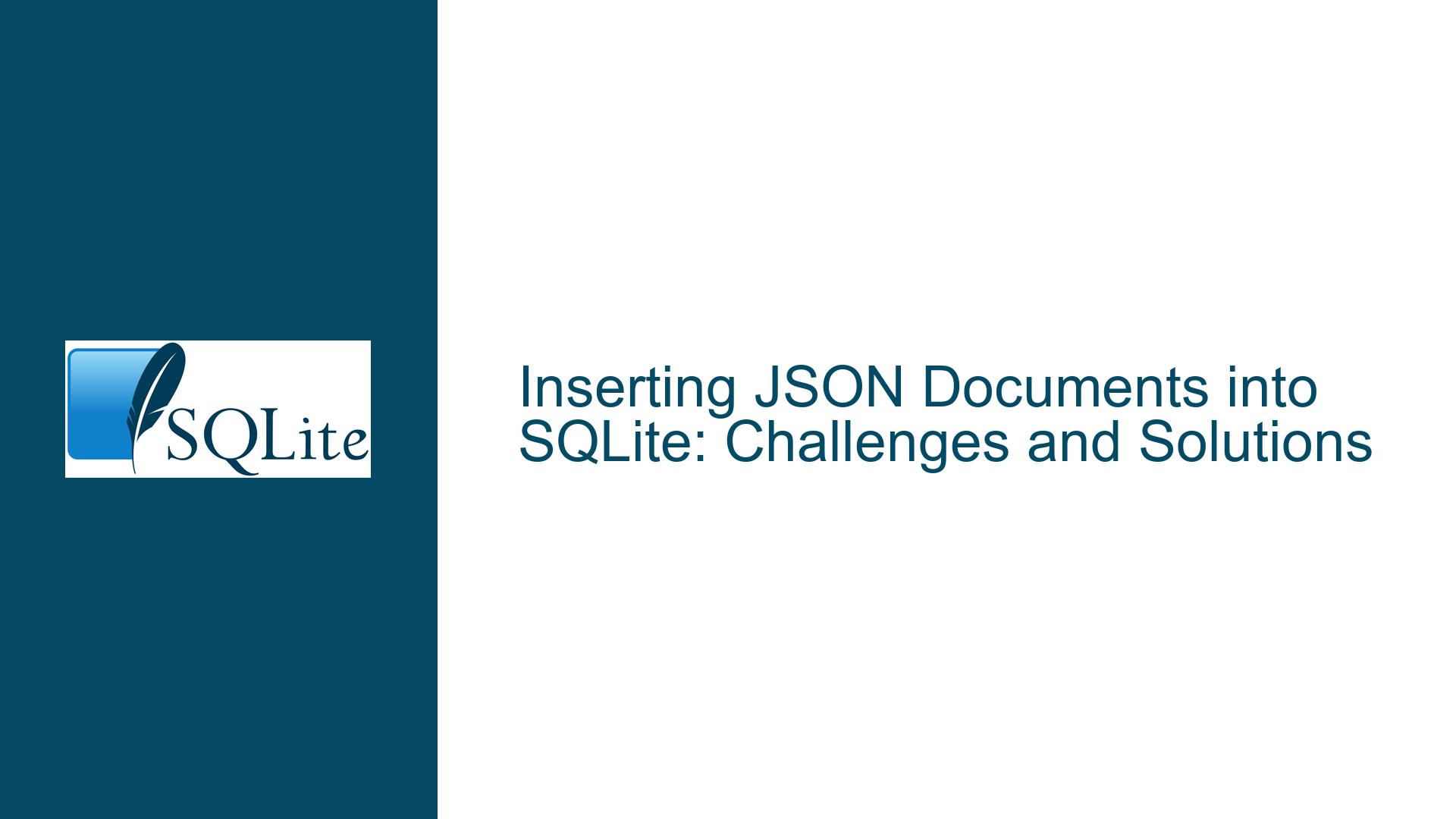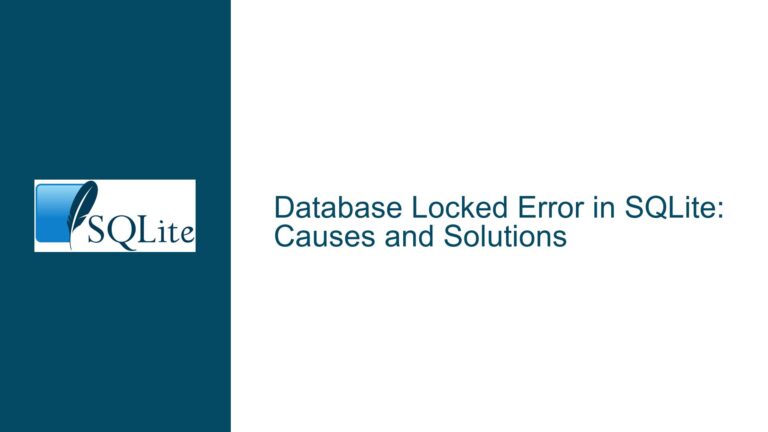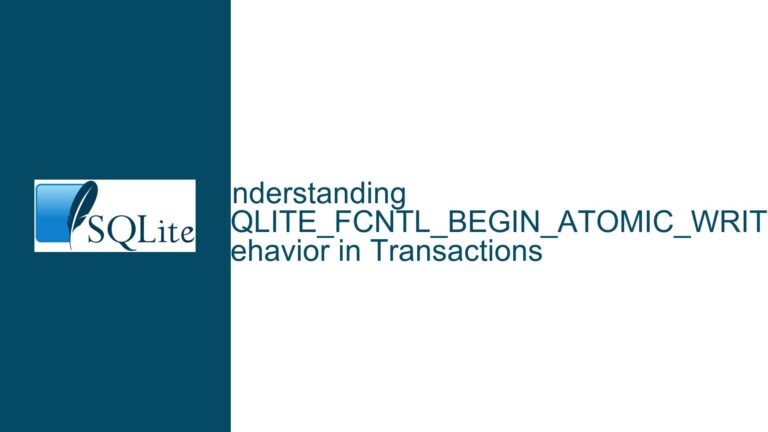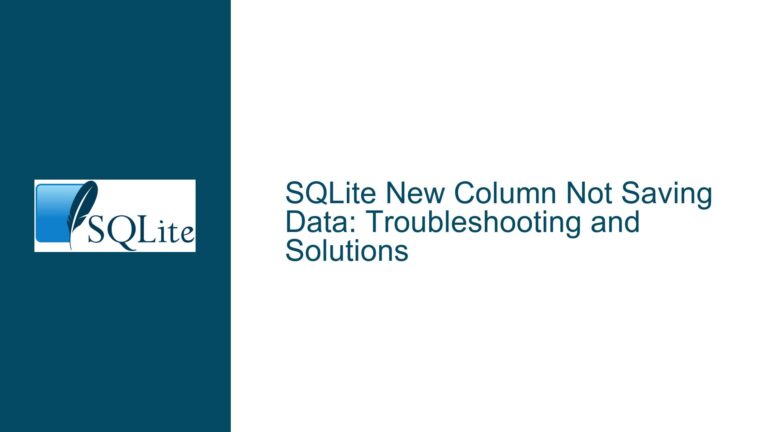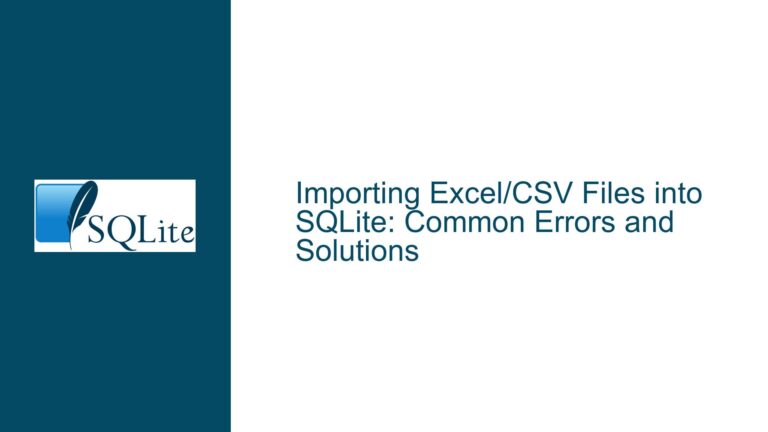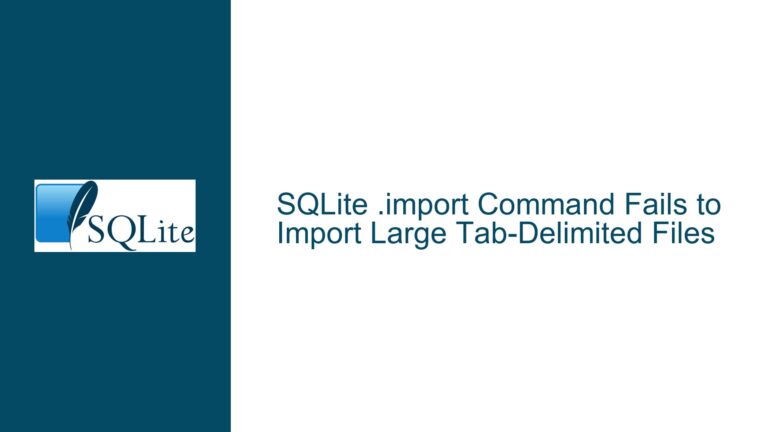Inserting JSON Documents into SQLite: Challenges and Solutions
JSON Data Insertion Challenges in SQLite
Inserting JSON documents into an SQLite database can be a nuanced task, especially when dealing with raw JSON data collected from web sources or other external systems. The primary challenge lies in the fact that SQLite, while lightweight and versatile, does not natively support JSON as a first-class data type. Instead, JSON data is typically stored as plain text within a TEXT column, which necessitates careful handling of quotes, whitespace, and other formatting issues. This becomes particularly problematic when attempting to import JSON data via Unix pipes or other automated methods, as the .import command in SQLite is designed for tabular data and does not handle JSON’s nested structures gracefully.
The core issue revolves around the need to insert JSON documents into a table where each document occupies a single row. This requires either pre-processing the JSON data to fit SQLite’s tabular import mechanisms or leveraging SQLite’s JSON1 extension to parse and insert the data programmatically. Both approaches have their own set of complexities and trade-offs, which we will explore in detail.
Interrupted JSON Parsing and Import Mechanisms
One of the primary causes of difficulty when inserting JSON documents into SQLite is the mismatch between JSON’s hierarchical structure and SQLite’s tabular data model. JSON documents often contain nested objects and arrays, which do not map directly to the rows and columns of a relational database. This structural mismatch can lead to issues such as incomplete data insertion, malformed JSON strings, or even database corruption if the JSON data is not properly sanitized before insertion.
Another common issue arises from the use of Unix pipes and command-line tools to import JSON data. While tools like curl and jq can fetch and preprocess JSON data, they often produce output that is not immediately compatible with SQLite’s .import command. For example, JSON data may contain double quotes, newlines, or other special characters that need to be escaped or removed before insertion. Additionally, the .import command expects data to be in a tabular format, such as CSV or TSV, which further complicates the process of importing raw JSON.
The JSON1 extension in SQLite provides some relief by offering functions like json_extract and json_each to parse and manipulate JSON data directly within SQL queries. However, using these functions requires a deeper understanding of SQLite’s query syntax and JSON parsing capabilities, which may not be immediately accessible to all users. Furthermore, the JSON1 extension does not eliminate the need for careful handling of JSON data, as improper use of these functions can still result in errors or data loss.
Leveraging SQLite-Utils and JSON1 Extension for Robust JSON Insertion
To address the challenges of inserting JSON documents into SQLite, we can employ a combination of tools and techniques that streamline the process while ensuring data integrity. One such tool is sqlite-utils, a command-line utility that simplifies the insertion of JSON data into SQLite databases. This tool automatically handles the conversion of JSON documents into SQLite’s tabular format, eliminating the need for manual preprocessing or complex SQL queries.
For example, consider the following command, which inserts a JSON array into an SQLite database using sqlite-utils:
echo '[
{
"id": 1,
"name": "Cleo",
"age": 4
},
{
"id": 2,
"name": "Pancakes",
"age": 2
},
{
"id": 3,
"name": "Toby",
"age": 6
}
]' | sqlite-utils insert dogs.db dogs - --pk=id
This command creates a new SQLite database file (dogs.db) with a table (dogs) that mirrors the structure of the JSON data. The --pk=id option specifies that the id field should be used as the primary key for the table. The resulting schema is as follows:
CREATE TABLE [dogs] (
[id] INTEGER PRIMARY KEY,
[name] TEXT,
[age] INTEGER
);
For users who prefer to work directly with SQLite’s native capabilities, the JSON1 extension offers a powerful set of functions for parsing and inserting JSON data. The following SQL query demonstrates how to use the json_extract and json_each functions to insert JSON data into a table:
INSERT INTO dogs(id, name, age)
SELECT
json_extract(value, '$.id'),
json_extract(value, '$.name'),
json_extract(value, '$.age')
FROM json_each(readfile('dogs.json'));
In this example, the readfile function reads the contents of a JSON file (dogs.json), and the json_each function iterates over each JSON object in the array. The json_extract function is then used to extract specific fields from each JSON object and insert them into the dogs table.
Both approaches have their own advantages and trade-offs. The sqlite-utils tool is more user-friendly and requires less manual intervention, making it ideal for users who prioritize ease of use. On the other hand, the JSON1 extension provides greater flexibility and control, making it suitable for users who need to perform complex JSON manipulations or who prefer to work directly within SQLite’s query environment.
In conclusion, inserting JSON documents into SQLite can be challenging due to the structural differences between JSON and SQLite’s tabular data model. However, by leveraging tools like sqlite-utils and SQLite’s JSON1 extension, users can overcome these challenges and achieve robust, efficient JSON data insertion. Whether you choose to use a command-line tool or native SQL functions, the key is to understand the nuances of JSON data handling and to apply the appropriate techniques for your specific use case.
